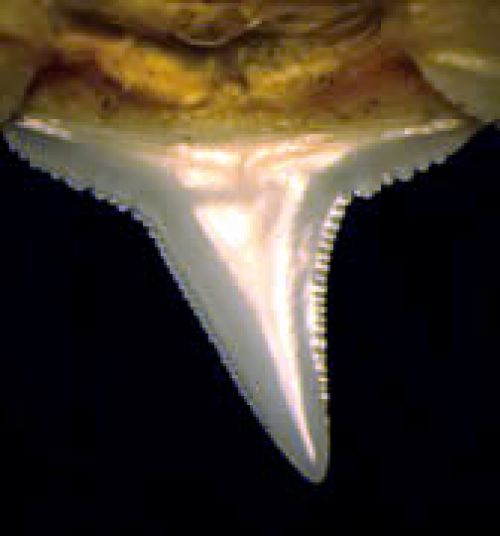
Adaptation
Just like any other species, Carcharhinus
melanopterus has distinct features that separate them from others.
To start, though maybe surprising, the Blacktip Reef Shark is a
fish. Some easy ways to know this are the fact that they have gills
and that they move there tail from left to right rather than up and
down like mammals. Blacktip Reef Sharks are grey or brown on the
dorsal area and white on the ventral. The tips of each of its fins
are black with a lighter band lying just below the black
(Ichthyology 2013).

The Blacktip Reef Shark has two pectoral fins, a first and second dorsal fin, pelvic fin, anal fin, and a caudal fin (EOL 2013). The caudal fin is used in propulsion, and the pectoral fins are used to navigate through the water. This combined with its cartilaginous skeleton makes for a flexible, and very successful motile predator.
Shark species have a wide range of different teeth. The Blacktip
Reef Shark has narrow oblique cusped teeth on top, and narrow
serrated ones on bottom. This allows the shark to not only pierce
the flesh but cut into it much like a steak knife. Because of the way that their teeth are structured, it allows the
sharks to feed on organisms such as crustaceans, molluscs, and some
sea snakes; just to name a few (IUCN 2009). The image at the left
is an example of the sharks serrated tooth. At any given time they
can have 44 to 55 teeth actually being used; excluding the ones that
are waiting to replace them (Ichthyology 2013).
Because of the way that their teeth are structured, it allows the
sharks to feed on organisms such as crustaceans, molluscs, and some
sea snakes; just to name a few (IUCN 2009). The image at the left
is an example of the sharks serrated tooth. At any given time they
can have 44 to 55 teeth actually being used; excluding the ones that
are waiting to replace them (Ichthyology 2013).
A mature Carcharhinus melanopterus range in size from 1 meter to 1.2 meters in locations throughout the Pacific and Indian Ocean (Caselle et al 2009). The largest known specimen was recorded to be a little more than 2 meters long (Ichthyology 2013). In comparison the Scalloped Hammerhead Shark (Sphyrna lewini) can reach well over 2 meters, and the Tiger Shark (Galeocerdo cuvier) can surpass even that reaching into the 5 meter mark.
Sharks in general also have a very keen sense of smell. When it comes to detecting their prey at a distance; the olfactory system is by far the most effective. Their sense of smell is so well adapted that they can detect a wounded victim nearly a mile away (Hobson 1963).
<<Habitat Home Reproduction>>